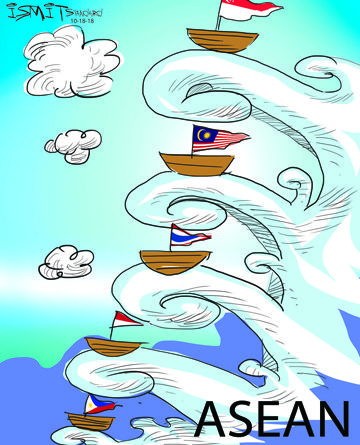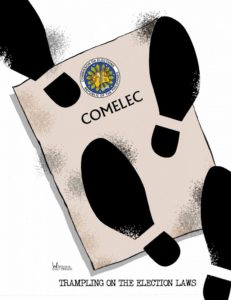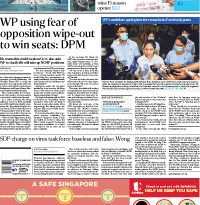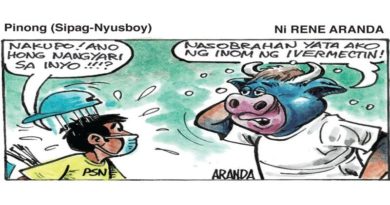OP ED EDITORIAL: MANILA STANDARD –Weak and strong

Among the nine Southeast Asian countries included in the rankings, we placed fifth, behind Singapore (second in the world) and Malaysia (25th globally), followed by Thailand (38th) and Indonesia (45th).
– SPACE RESERVE FOR YOUR ADVERTISEMENT –
.
The WEF ranking provides the big picture of which economies are doing well and which could do better.
.
All these are happening amid the changing nature of competitiveness, the WEF said, brought about by changes in digital technology interacting with traditional issues like governance, infrastructure and skills.
.
But aside from the big picture, the report also takes a closer look at individual economies’ performance vis-a-vis the rest of the world in various indicators and pillars.
.
Our economic managers and planners can take a cue from the findings as they draw up where to work harder.
.
The Philippines, for instance, ranked 67th in enabling environments (institutions, infrastructure, ICT adoption and macro-stability), 94th in human capital (health and skills), 34th in market (product market, labor market, financial system and market size) and 52nd in innovation ecosystem (business dynamism and innovation capability).
.
– SPACE RESERVE FOR YOUR ADVERTISEMENT –
.
ASEANEWS EDITORIAL & CARTOONS:
Updated
After nine straight months of rising prices, the government took its first big step to stop the rise last Tuesday. It removed all restrictions on rice importations. Since food prices make up the biggest part of inflation figures and rice is the principal food item of Filipinos, unimpeded rice importation should have an impact on the whole market situation in the country.
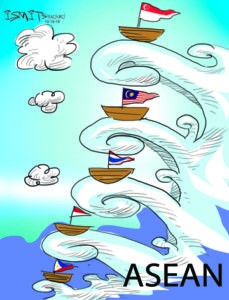
7.4. The Manila Times – JUST IN TIME FOR HALLOWEEN….
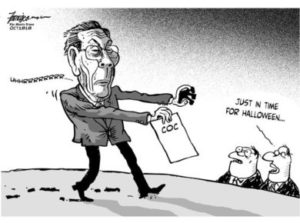
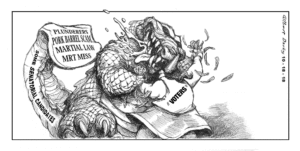
7.6 The Philippine Star –Sustainable tourism
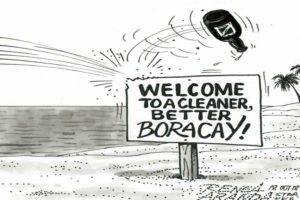


The Straits Times says
A Blue Plan to prevent a grey future
.
The just-released third iteration of the Blue Plan builds on the impetus provided by the first one in 2001 and the second in 2009. The objective remains the same: To preserve Singapore’s marine landscape, which ranges from mangroves and seagrass meadows to coastal forests and coral reefs. The third iteration builds on the success of the previous two initiatives to argue that more can be done in these areas. Responding to the latest plan – which is a ground-up initiative by conservationists – the Government signalled its willingness to see how it can work with the marine community to realise common goals. Second Minister for National Development Desmond Lee, who is also Minister for Social and Family Development, captured the essence of the national approach to biodiversity in his remarks that “you cannot protect what you don’t love, and you can’t love what you don’t know”.
Knowledge, love and protection are the key variables that will determine the success of the latest Blue Plan. It is no secret that every year, more than 80,000 ships pass through the Strait of Malacca and Singapore’s waters, carrying a third of the world’s traded goods and a sixth of its oil supply. These economic indicators attest to the critical importance of the waters around Singapore to the world’s material well-being, on which Singapore’s survival and success also rest ultimately. But that is from an economic standpoint.
TO READ THE FULL ARTICLE: https://www.straitstimes.com/opinion/st-editorial/a-blue-plan-to-prevent-a-grey-future
 All photographs, news, editorials, opinions, information, data, others have been taken from the Internet ..aseanews.net | aseanews@hotmail.com |.For comments, Email to :D’Equalizer | daequalizer@live.com.ph | Contributor
All photographs, news, editorials, opinions, information, data, others have been taken from the Internet ..aseanews.net | aseanews@hotmail.com |.For comments, Email to :D’Equalizer | daequalizer@live.com.ph | Contributor

